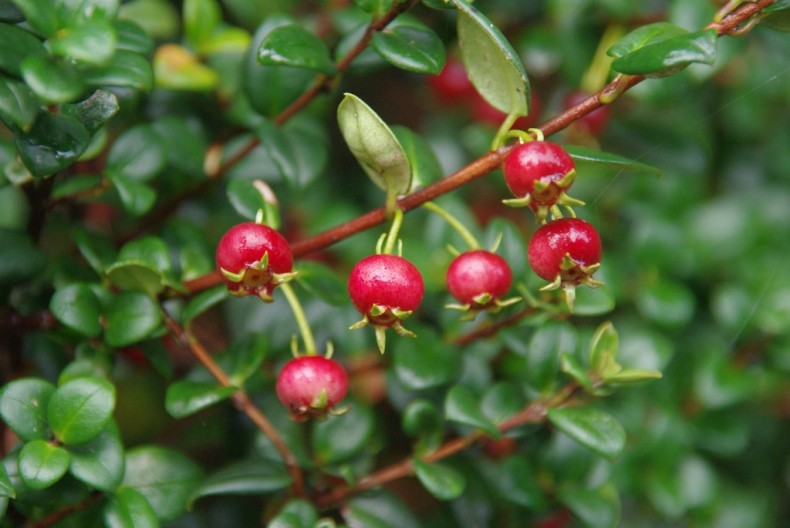Article and photograph by Gail Thomas
They’re aromatic, packed with flavour and are a great addition to both the edible or ornamental garden. Ugni molinae aka Tazziberries, ugni berries or Chilean guavas are now being grown commercially in Tasmania and Victoria. The Tasmanian growers started in the mid 1990′s and as a marketing ploy similar to kiwi fruit (Chinese gooseberries), called them Tazziberries as they believed it sounded better than Ugni molinae. These delicious pea sized berries boast a spicy strawberry/pineapple taste and an aromatic perfume that fills the autumn air. Sporting a deep burgundy hue with a creamy blush when ripe they lend themselves to both sweet and savoury applications, extending even liqueur or wine!
Ugni molinae was first described by Juan Ignacio Molina in 1782 hence it’s name and was formerly known as Myrtus ugni. It was introduced to England in 1844 by botanist and plant collector William Lobb. The evergreen plants are slow-growing, frost tolerant, prefer an acidic well drained soil of 5-6Ph, are frost tolerant, do well in full sun or will take part shade and benefit from liquid fertilizer. The bushes can be planted at a spacing of 3m wide with 2m between the plants – they could be planted as a hedge but harvesting the fruit would then be a little more difficult – so are best kept to around 2m or less in height and around a metre across.
Bushes are not bothered by pests or disease, should be pruned in winter to encourage new growth and by getting the centre removed will help the sun get onto more of the plant. The plants produce delicate bell-shaped white or pink flowers in late spring with fruit ripening from approximately March through to May. They produce fruit from the second year however the best crops are produced from around five years.
Use them as an accompaniment to a meat terrine, scatter into a salad, add to muffins, desserts, ice cream, as a jelly or jam (said to be Queen Victoria’s favourite!) or best of all relish their unique flavour by simply eating fresh.

